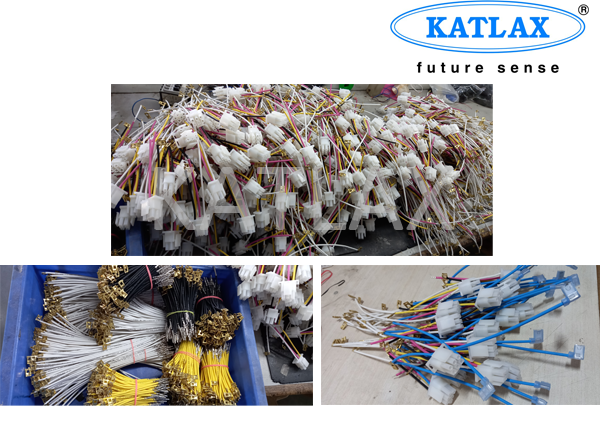
Overview
A cable harness, also known as a wire harness, wiring harness, cable assembly, wiring assembly or wiring loom, is an assembly of electrical cables or wires which transmit signals or electrical power. The cables are bound together by a durable material such as rubber, vinyl, electrical tape, conduit, a weave of extruded string, or a combination thereof.
The wiring harness is the nerve system, Power and information travels through this network much like the circulatory and central nervous systems of the human body. it handles voltage and, in some cases, digital information. Think of each wire like a garden hose, if you pinch it then that restricts flow, that is resistance. If you have resistance in the wire or connector then things do not work correctly.
Wire Harnesses and Wire Assemblies
While wire harnesses and cable assemblies are often confused, these two vital components of today’s electronic-centric world couldn’t be more different. For one, wires and cables are two separate things. A wire is a single strand of a conductive material, like copper or aluminum. On the other hand, a cable is a group of insulated wires that have been twisted together and housed within a protective outer jacket. So, what is a wiring harness used for? Wire harnesses are the physical structure that turns a group of wires, connections, terminations, and other components into a cohesive, functioning electronic system. Their application is only limited by the imagination.
Application
Commonly used in automobiles, as well as
- Industrial controls,
- Medical,
- Telecommunications,
- Military
- Lots of other ancillary industries.
Process
In spite of increasing automation, hand manufacture continues to be the primary method of cable harness production in general, due to the many different processes involved, such as:
- Routing wires through sleeves,
- Taping with fabric tape, in particular on branch outs from wire strands,
- Crimping terminals onto wires, particularly for so-called multiple crimps (more than one wire into one terminal),
- Inserting one sleeve into another,
- Fastening strands with tape, clamps, or cable ties.
It is difficult to automate these processes, with major suppliers still using manual means of production, only automating portions of the process. Manual production remains more cost effective than automation, especially with small batch sizes.
Pre-production can be automated in part. This affects:
- Cutting individual wires (cutting machine),
- Wire stripping (Automated Wire Stripping Machines),
- Crimping terminals onto one or both sides of the wire,
- Partial plugging of wires pre-fitted with terminals into connector housings (module),
- Soldering of wire ends (solder machine),
- Twisting wires.

thanks for sharing
Electrical Wire Harness Design | Wire Harness Manufacturing - SolidPro ES
good info
Well explained
Great articles thanks for sharing this
Electrical Wire Harness Design | Wire Harness Manufacturing ?- SolidPro ES
Good to see such a nice Information Best Wire harnesses manufacturers in India
thanks for sharing this.,.,…
Electrical Wire Harness Design | Wire Harness Manufacturing ?- SolidPro ES
Good info….Thanks for sharing the blog with us
Thnaks for the good blog